
|
Astronomy Picture Of the Day (APOD)
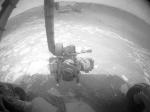 Inside Victoria Crater on Mars
Inside Victoria Crater on Mars
17.09.2007
NASA's Opportunity rover is now inside Victoria Crater on Mars. Last week the robot rolled about 20 meters into the largest crater any Martian rover has yet encountered, the crater next to which Opportunity has been perched for months.
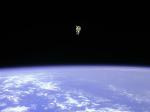 To Fly Free in Space
To Fly Free in Space
16.09.2007
At about 100 meters from the cargo bay of the space shuttle Challenger, Bruce McCandless II was further out than anyone had ever been before. Guided by a Manned Maneuvering Unit (MMU), astronaut McCandless, pictured above, was floating free in space.
 Iapetus: 3D Equatorial Ridge
Iapetus: 3D Equatorial Ridge
15.09.2007
This bizarre, equatorial ridge extending across and beyond the dark, leading hemisphere of Iapetus gives the two-toned Saturnian moon a distinct walnut shape. With red/blue glasses you can check out a remarkable stereo composition of this extraordinary feature -- based on close-up images from this week's Cassini spacecraft flyby.
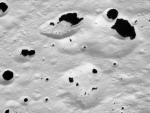 Iapetus in Black and White
Iapetus in Black and White
14.09.2007
Iapetus, Saturn's third largest moon, is a candidate for the strangest moon of Saturn. Tidally locked in its orbit around the ringed gas giant, Iapetus is sometimes called the yin-yang moon because...
 NGC 7129 and NGC 7142
NGC 7129 and NGC 7142
13.09.2007
This alluring telescopic image looks toward the constellation Cepheus and an intriguing visual pairing of dusty reflection nebula NGC 7129 (left) and open star cluster NGC 7142. The two appear separated by only half a degree on the sky, but they actually lie at quite different distances.
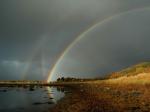 Six Rainbows Across Norway
Six Rainbows Across Norway
12.09.2007
Have you ever seen six rainbows at once? They are not only rare to see -- they are a puzzle to understand. The common rainbow is caused by sunlight internally reflected by the backs of falling raindrops, while also being refracted at the air / water boundary.
 A Scorpio Sky Spectacular
A Scorpio Sky Spectacular
11.09.2007
If Scorpio looked this good to the unaided eye, humans might remember it better. Scorpio more typically appears as a few bright stars in a well known but rarely pointed out zodiacal constellation. To get a spectacular image like this, though, one needs a good camera, color filters, and a digital image processor.
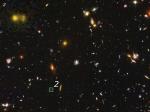 Building Galaxies in the Early Universe
Building Galaxies in the Early Universe
10.09.2007
What was the very early universe like? To help find out, astronomers pointed the Hubble Space Telescope between bright nearby objects to create one of the deepest images ever -- the Hubble Ultra Deep Field (HUDF). The resulting HUDF is like a jewel box of strange and distant galaxies.
 The Great Basin on Saturns Tethys
The Great Basin on Saturns Tethys
9.09.2007
Some moons wouldn't survive the collision. Tethys, one of Saturn's larger moons at about 1000 kilometers in diameter, survived the collision, but sports today the expansive impact crater Odysseus. Sometimes called...
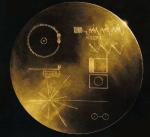 The Voyagers Message in a Bottle
The Voyagers Message in a Bottle
8.09.2007
Launched thirty years ago, NASA's Voyager 1 and 2 spacecraft are now respectively 15 billion and 12.5 billion kilometers from the Sun, equivalent to about 14 and 11.5 light-hours distant. Still functioning, the Voyagers are being tracked and commanded through the Deep Space Network.
|
January February March April May June July August September October November December |
|||||||||||||||||||||||||||||||||||||||||||||||||